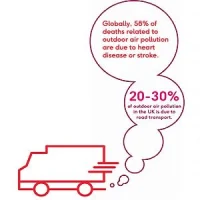Heart failure (HF) is almost as common in women as men, but its characteristics vary by sex. Of note, women are largely underrepresented in clinical trials of HF medications, and that evidence of medications’ efficacy in women is limited, according to a review article in the journal ESC Heart Failure.
Heart failure presentation differs between female and male patients. For example, women tend to be older than men at diagnosis and women tend to have higher body mass index. Notably, females more often show with hypertensive aetiology and the preserved ejection fraction phenotype (HFpEF), while men more often show ischaemic aetiology and the reduced ejection fraction phenotype (HFrEF). In addition, diabetes is a stronger risk factor for HFrEF in women than in men.
However, "the HF clinical guidelines in Europe, the United States, and Canada do not reflect the sexual dimorphism," the article points out. Given the knowledge that some adverse drug reactions, such as torsade de pointes and angiotensin‐converting enzyme inhibitor‐induced cough, occur more frequently in women, the article emphasises the need to test medications thoroughly in both sexes and explore sexual dimorphisms.
Survival rates have increased over the last 30 years, and consequently HF patients spend more time alive with the disease. The article says therapeutic treatment for HFrEF has enabled important progress both in terms of disease progression and mortality, while an effective treatment for HFpEF remains to be found.
"Nevertheless, there are HF patients of both sexes in both HF types, and patients of both sexes use the therapeutics available to them," the article notes. "Further, the clinical guidelines on treatment of HF in both men and women are constructed using results from RCTs, which often include only 30 percent or less women."
The reason for the low percentage of women is multifaceted, but one of the key factors is the restrictions put on women entering RCT that often leads to a homogeneous sample with limited hormonal fluctuation, while women present a more heterogeneous HF disease than men.
"The main incentive to increase the number of women in HF RCTs is to enable a systematic assessment of drug safety and efficacy in the full target population, instead of one that is dictated by the effect in men," explain the article authors. "In addition to differences in clinical presentation between the two sexes, there are biological differences that may lead to different responses to the same drug. Thus, verifying effects in both sexes should be considered an essential part of the clinical testing process."
Both the U.S. National Institute of Health and the Canadian Institute of Health Research have tried to address the sex gap in medicine by adding a sex/gender requirement to all applications for funding. As healthcare advances towards personalised medicine, the article says, the current lack of sex‐specific medicine will have to be solved, or it will become a roadblock.
“We have much hope that precision medicine will lead to more efficacious medications. I believe that this will in part be enabled by the conduct of randomised clinical trials that are more sex-aware,” said co-author Dr. Marie-Pierre Dubé, of the Montreal Heart Institute Research Centre.
Source: Wiley
Image Credit: Pixabay
References:
Levinsson A, Dubé M‐P, Tardif J‐C, and de Denus S (2018) Sex, drugs, and heart failure: a sex‐sensitive review of the evidence base behind current heart failure clinical guidelines. ESC Heart Failure; First published: 19 June 2018. https://doi.org/10.1002/ehf2.12307
Latest Articles
heart failure, women, clinical trials, HF medications
Heart failure (HF) is almost as common in women as men, but its characteristics vary by sex. Of note, women are largely underrepresented in clinical trials of HF medications, and that evidence of medications’ efficacy in women is limited, according to a r










